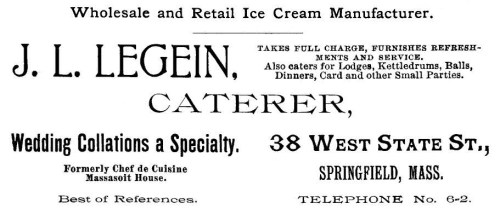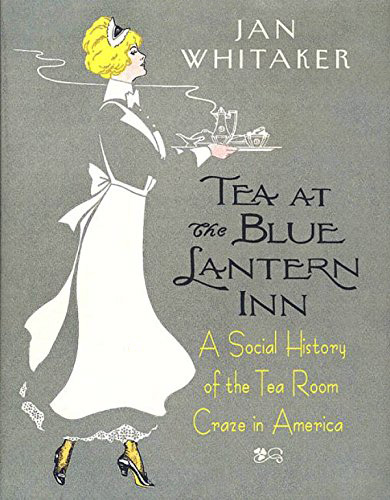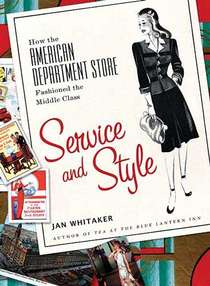 “Become a chef and see the world!” might have been the motto of many of the chefs who came to the United States from Europe in the 19th century. Take Joseph L. Legein, born in Belgium in 1852. He compressed a lot of traveling into his young working life. His biography could be used as a recipe for a colorful culinary career. Did he ever imagine he would end up as an ice cream maker in Springfield, Massachusetts?
“Become a chef and see the world!” might have been the motto of many of the chefs who came to the United States from Europe in the 19th century. Take Joseph L. Legein, born in Belgium in 1852. He compressed a lot of traveling into his young working life. His biography could be used as a recipe for a colorful culinary career. Did he ever imagine he would end up as an ice cream maker in Springfield, Massachusetts?
To duplicate Joseph’s career, follow these directions carefully:
When you are 14 apprentice with the famous Paris caterers Potel & Chabot, the largest firm in Europe in the late 1860s. (They are still in business today.)
After earning a diploma two years later, secure posts at Paris restaurants such as the celebrated Café Anglais.
Then, take positions in the households of rich and powerful men such as Baron Rothschild and Louis Faidherbe, the latter a general recalled from Senegal in 1870 to battle the Prussians who are advancing on Paris.
 Every chance you get, travel throughout Europe visiting international exhibitions where pièces-montées made by chefs of spun sugar, gum and almond paste are displayed. You will need to make these for centerpieces at formal dinners.
Every chance you get, travel throughout Europe visiting international exhibitions where pièces-montées made by chefs of spun sugar, gum and almond paste are displayed. You will need to make these for centerpieces at formal dinners.
Go to Brussels and work in the Café Riche as night chef.
Next, take a position in the Hotel de Suède in Brussels and get chummy with Alexander, chef to the Belgian royal court, who gets you a gig working with him.
At 20 you are ready to take charge of a banquet staff of seven at the Hotel de la Paix in Antwerp, a highlight of which will be overseeing a 12-course dinner for 1,400 guests.
Go to London to run a kitchen in one of the Inns of Court (but do not get sick after 7 months and return to work at the Hotel de la Paix).
On the spur of the moment decide to sail for America to attend the Centennial Exposition in Philadelphia in 1876. You are about to take up residence in your 4th country and your 8th major city.
Immediately upon landing, accept a position as chef at the restaurant connected with the Globe Hotel, one of the huge hotels thrown up overnight to house Centennial visitors which will be demolished as soon as the fair ends.
After a few months, quit this job to become chef at the Palmer House in Chicago.
Leave this a couple of months later and take a job opening the new Ogden House at Council Bluffs, Iowa. (Why would you leave the Palmer House for this?)
Decide you aren’t paid enough. Go to New York and sign on at the new Windsor Hotel.
While at the Windsor accept a job as chef at the Massasoit House, the top hotel in Springfield MA. You are now 25 years old and this is your 14th or 15th job. Maybe you should stick at it for a while.
Stay at the Massasoit House until you are 34, in 1886, then open your own catering company specializing in ice cream manufacturing.

© Jan Whitaker, 2009


 It's great to hear from readers and I take time to answer queries. I can't always find what you are looking for, but I do appreciate getting thank yous no matter what the outcome.
It's great to hear from readers and I take time to answer queries. I can't always find what you are looking for, but I do appreciate getting thank yous no matter what the outcome.



Hi Jan,
Great Article!! Joseph L. Legein was my Great-Great Grandfather and this is some great family history that I can share with my kids. Do you have any other information on him that you can share?
With Regards,
Noah Legein
That was pretty much all I had, but I think you would be very interested in an article about his memories of being in Paris during the siege of 1870 when he had to hunt rats for food. The interview appeared in the Springfield Republican on Aug 13, 1914, p 7.
What can you tell me about william thomann chef of the chicago tremont house in the 1800’s?
I have no information about him.
Very interesting narrative Jan. I have a few menus from these places such as the Palmer House in Chicago (1880, 1883, 1885-86), Ogden House in Council Bluffs (1881), Windsor Hotel in New York City (1881), and Massasoit House in Springfield (1883, 1886). Of course, there is no mention of Monsieur Legein on any of these menus. The personal histories of these chefs can be so difficult to research. Thank you for sharing it.
It is interesting that he would settle down in Springfield and establish a catering business nearby Barr’s located at 384 Main Street. Barr’s, a well-established restaurant and ice cream parlor, promoted their catering business for weddings and other parties. Barr’s would have been a formidable competitor. Perhaps Barr’s was one of Monsieur Legein’s customers as his business card reads that he was both a wholesale and retail ice cream manufacturer.
Thanks for adding the interesting point about Barr’s. I know about it but didn’t realize it was next door. I suspect you may be right about Legein supplying Barr’s with ice cream. — Jan